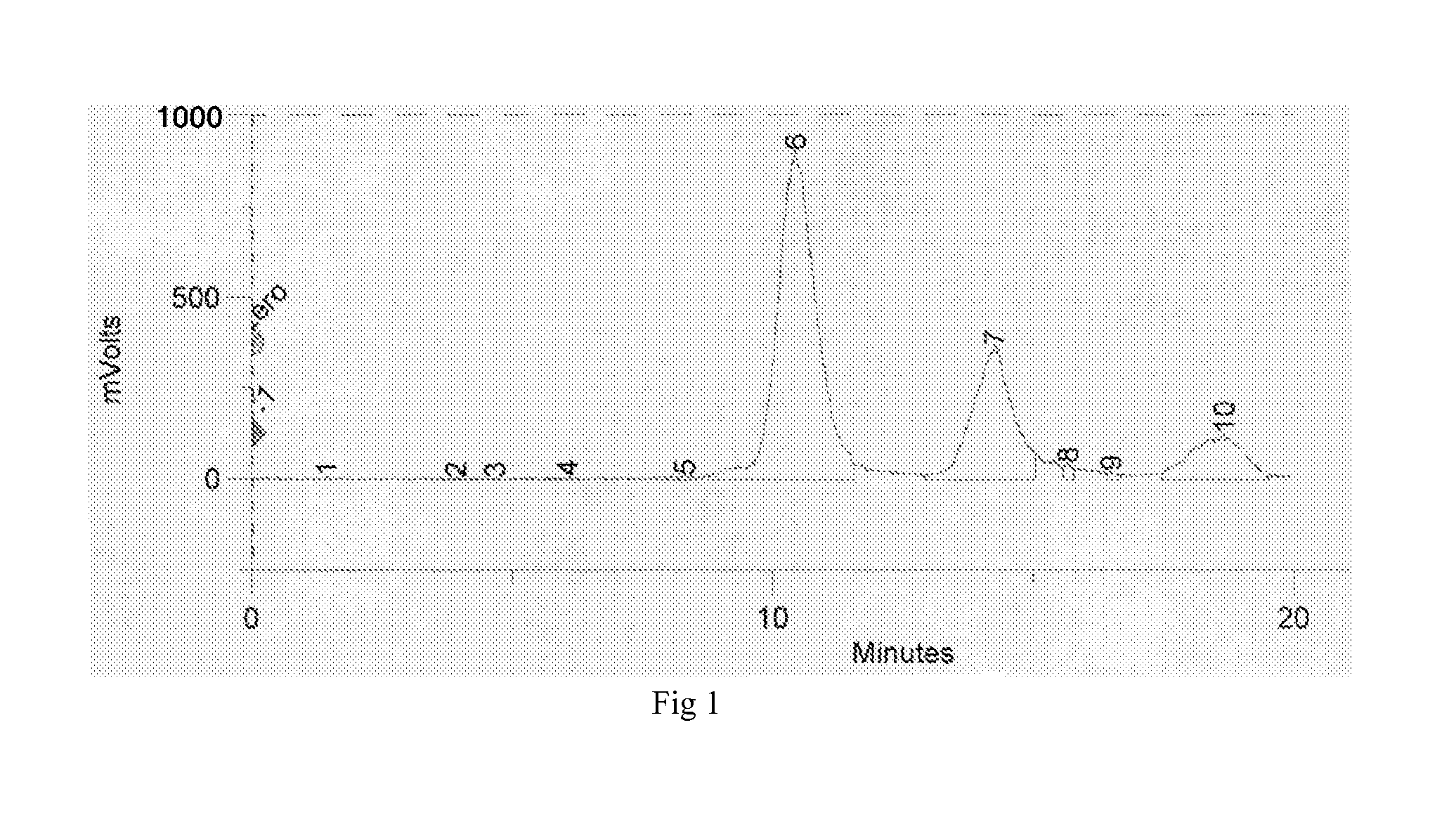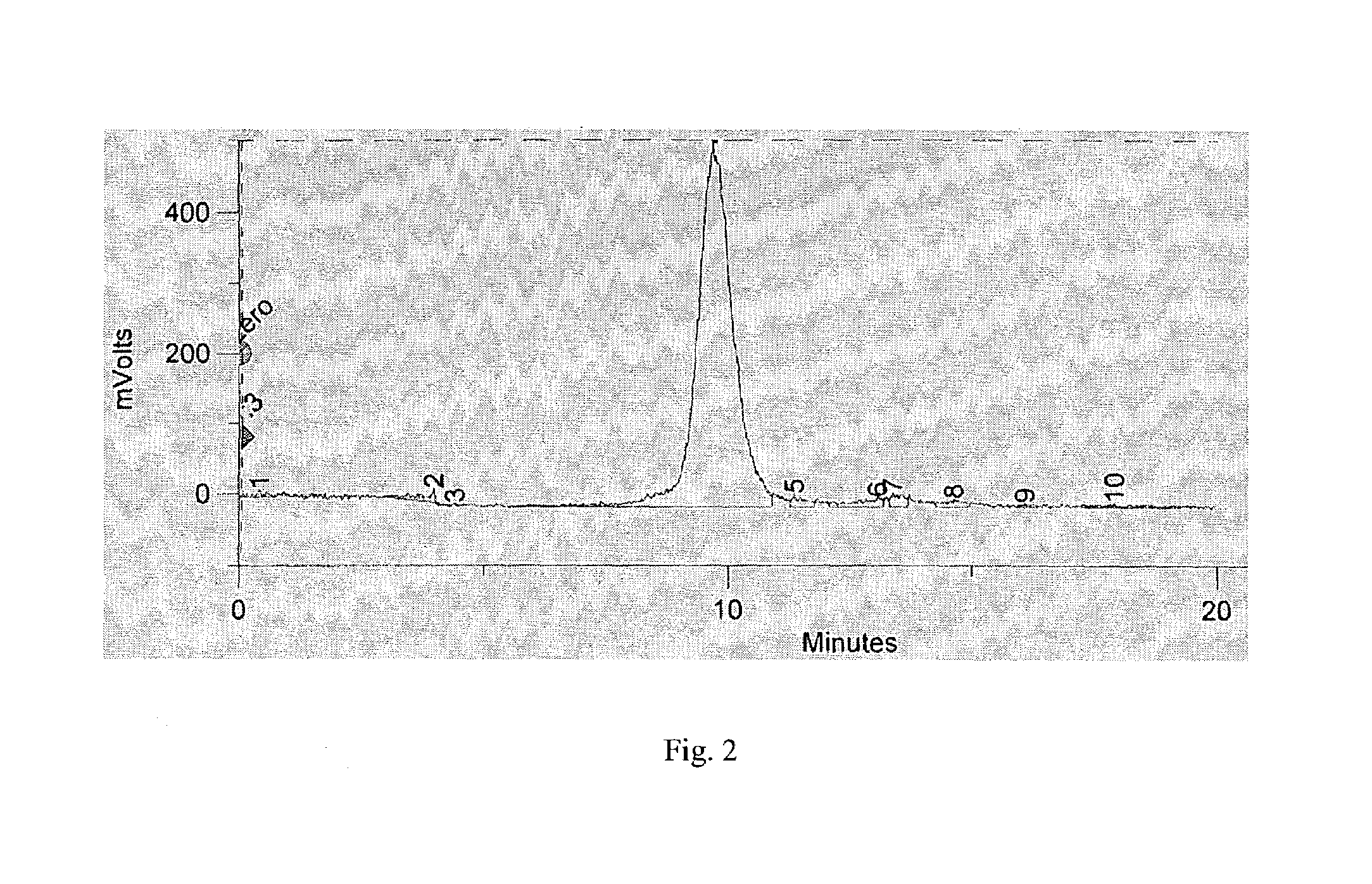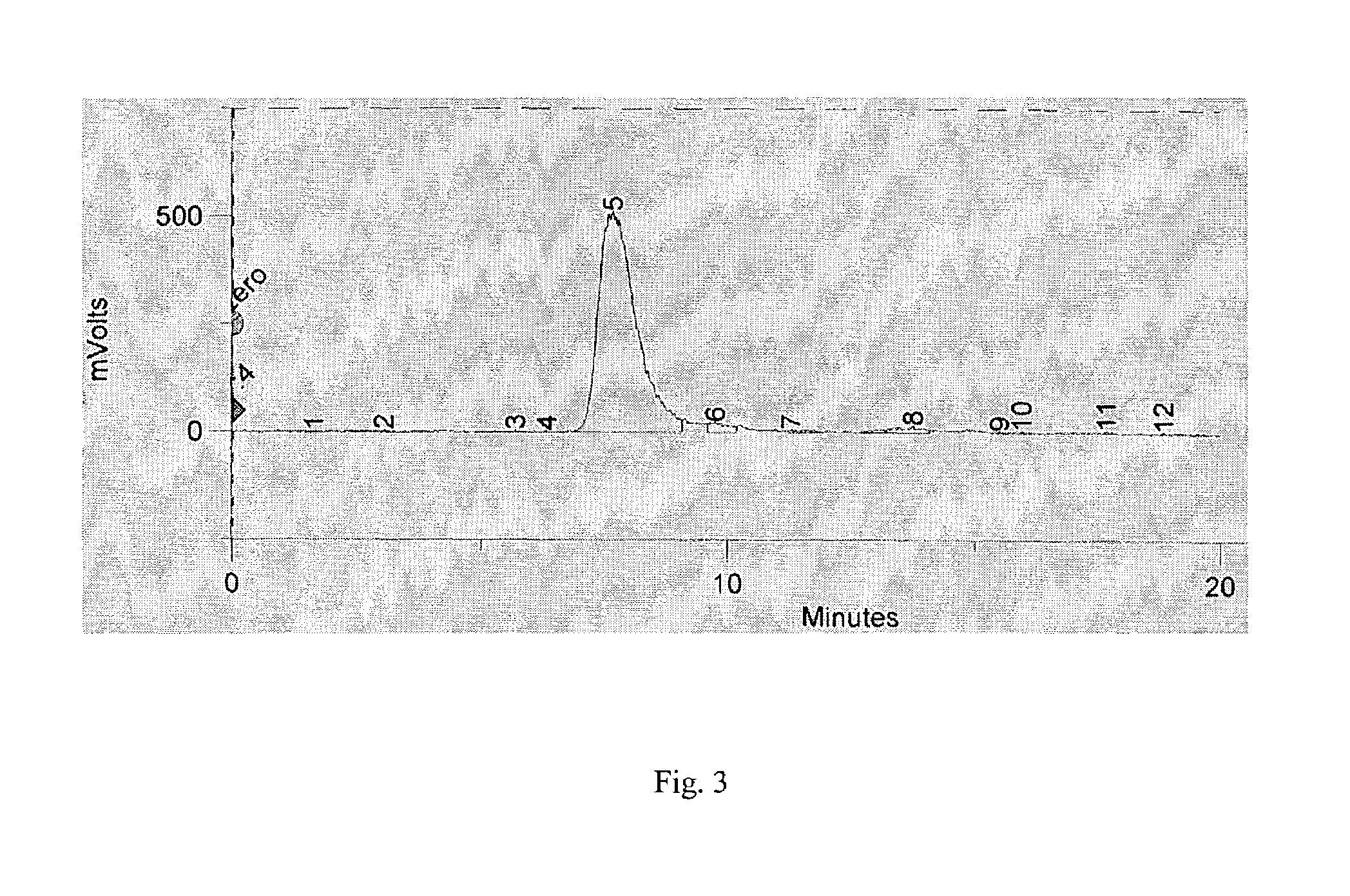Methods for the purification of stable radioiodine conjugates
a radioiodine conjugate and stable technology, applied in the field of reagent purification, can solve the problems of significantly affecting the radiotherapy effectiveness, the phenomenon of in vivo deiodination, and the residence time of radioiodine in target cells, and achieves the effects of improving antibody labeling efficiency, simplification and safe handling
- Summary
- Abstract
- Description
- Claims
- Application Information
AI Technical Summary
Benefits of technology
Problems solved by technology
Method used
Image
Examples
example 1
Simplified One-Pot Preparation and Purification Method for Labeling Disulfide-Reduced Anti-CEA MAb, hMN-14, with Radioiodinated IMP-R4
[0047]The procedure is illustrated below using IMP-R4 as the small molecular mass material which is radioiodinated and conjugated to disulfide-reduced anti-CEA MAb, hMN-14. IMP-R4 has the structure MCC-Lys(MCC)-Lys((1-(p-CSNH)benzyl)DTPA)-D-Tyr-D-Lys((1-(p-CSNH)benzyl)DTPA)-OH, wherein MCC is 4-(N-maleimidomethyl)-cyclohexane-1-carbonyl. IMP-R4 is part of the subject of U.S. patent application Ser. No. 09 / 696,740, filed Oct. 26, 2000.
[0048]I-131 sodium iodide from the supplier was buffered with 7-times its volume of 0.5 M sodium phosphate pH 7.4, and transferred, using additionally 1.4 mL of 40 mM sodium phosphate pH 7.4, into an iodogen-coated vial provided with a stir bar and containing IMP-R4 (0.13 μmol / 100 mCi of I-131). The solution was stirred 8-15 minutes, and unincorporated radioiodine was quenched with excess of 4-hydroxyphenylacetic acid. Th...
example 2
In Vitro Stability in Buffer and to Serum-Challenge
[0050]A purified product of Example-1 (62.9 mCi of total radioactivity), at a concentration of 0.9 mCi / mL and antibody concentration of 0.2 mg / mL, in phosphate buffer containing 2.5% HSA was left at the room temperature for 20 hr, and analyzed by size-exclusion HPLC. A exemplary phosphate buffer is an aqueous solution of 0.1 M sodium phosphate that is adjusted to a pH between 6.0 and 7.5. This showed that the product was practically unchanged. Complexation with 20-fold molar excess of the CEA antigen revealed the preservation of immunoreactivity.
[0051]In a second experiment, the product as above was diluted 33.3-fold in human serum, and incubated at 37° C. for 20 hr. Analysis at this time showed negligible loss of the label, and the material still complexed with CEA, indicating preservation of immunoreactivity.
example 3
Labeling at a Lower pH, and Purification
[0052]The procedure of Example-1 was followed, with a change that buffering of I-131 sodium iodide was carried out with 7-times its volume of 0.3 M sodium phosphate pH 6, followed by transferring the buffered I-131 into iodogen vial using 1.4 mL of 0.03 M sodium phosphate, pH 6. After radioiodination, conjugation to disulfide-reduced hMN-14, and purification by stirring with AG® 1X8 anion exchange resin, a recovery of 39 mCi (69%) of purified I-131-IMP-R4-hMN-14 was obtained starting from 56.5 mCi of I-131 sodium iodide. In another experiment, using the same procedure, 69.3 mCi of purified product (63.1%) was obtained from 109.8 mCi of I-131 sodium iodide. Again, in these two experiments, complete preservation of immunoreactivity was documented using complexation with CEA.
PUM
| Property | Measurement | Unit |
|---|---|---|
| pore diameter | aaaaa | aaaaa |
| pore diameter | aaaaa | aaaaa |
| pore diameter size | aaaaa | aaaaa |
Abstract
Description
Claims
Application Information
 Login to View More
Login to View More - R&D
- Intellectual Property
- Life Sciences
- Materials
- Tech Scout
- Unparalleled Data Quality
- Higher Quality Content
- 60% Fewer Hallucinations
Browse by: Latest US Patents, China's latest patents, Technical Efficacy Thesaurus, Application Domain, Technology Topic, Popular Technical Reports.
© 2025 PatSnap. All rights reserved.Legal|Privacy policy|Modern Slavery Act Transparency Statement|Sitemap|About US| Contact US: help@patsnap.com



